Black And Decker BDS1802G Handleiding
Black And Decker
Schuurmachine
BDS1802G
Bekijk gratis de handleiding van Black And Decker BDS1802G (6 pagina’s), behorend tot de categorie Schuurmachine. Deze gids werd als nuttig beoordeeld door 43 mensen en kreeg gemiddeld 4.4 sterren uit 22 reviews. Heb je een vraag over Black And Decker BDS1802G of wil je andere gebruikers van dit product iets vragen? Stel een vraag
Pagina 1/6

• Use only accessories that are recommended by the manufacturer for your model.
Accessories that may be suitable for one tool may create a risk of injury when used on
another tool.
Service
•Tool service must be performed only by qualified repair personnel. Service or
maintenance performed by unqualified personnel could result in a risk of injury.
•When servicing a tool, use only identical replacement parts. Follow instructions in
the Maintenance section of this manual. Use of unauthorized parts or failure to follow
Maintenance Instructions may create a risk of electric shock or injury.
Specific Safety Rules
•Hold tool by insulated gripping surfaces when performing an operation where the
cutting tool may contact hidden wiring or its own cord. Contact with a "live" wire will
make exposed metal parts of the tool "live" and shock the operator.
•When working on a ladder or on scaffolding be sure to lay the tool down on its side
when not in use. Some tools with large battery packs will stand upright but may be easily
knocked over.
WARNING: Some dust created by power sanding, sawing, grinding, drilling, and
other construction activities contains chemicals known to cause cancer, birth defects
or other reproductive harm. Some examples of these chemicals are:
• lead from lead-based paints,
• crystalline silica from bricks and cement and other masonry products, and
• arsenic and chromium from chemically-treated lumber (CCA).
Your risk from these exposures varies, depending on how often you do this type of work. To
reduce your exposure to these chemicals: work in a well ventilated area, and work with
approved safety equipment, such as those dust masks that are specially designed to filter out
microscopic particles.
•Avoid prolonged contact with dust from power sanding, sawing, grinding, drilling,
and other construction activities. Wear protective clothing and wash exposed areas
with soap and water. Allowing dust to get into your mouth, eyes, or lay on the skin may
promote absorption of harmful chemicals.
WARNING: Use of this tool can generate and/or disburse dust, which may cause
serious and permanent respiratory or other injury. Always use NIOSH/OSHA approved
respiratory protection appropriate for the dust exposure. Direct particles away from face and
body.
CAUTION: Wear appropriate hearing protection during use. Under some conditions
and duration of use, noise from this product may contribute to hearing loss.
First Aid Measures for Gel Components
If gel within the comfort grip becomes exposed and results in skin contact wash with soap
and water; for eye contact, flush with flowing water. If swallowed, seek medical attention.
Material Safety Data Sheet (MSDS) available from 1-800-544-6986
The label on your tool may include the following symbols.
V ..........................volts A..........................amperes
Hz ........................hertz W ........................watts
min........................minutes ......................alternating current
......................direct current no ........................no load speed
..........................Class II Construction ........................earthing terminal
........................safety alert symbol .../min ..................revolutions or
reciprocations
per minute
General Safety Rules - For All Battery Operated Tools
WARNING! READ AND UNDERSTAND ALL INSTRUCTIONS.
Failure to follow all instructions listed below, may result in electric shock, fire and/or serious
personal injury. SAVE THESE INSTRUCTIONS
Work Area
•Keep your work area clean and well lit. Cluttered benches and dark areas invite
accidents.
•Do not operate power tools in explosive atmospheres, such as in the presence of
flammable liquids, gases, or dust. Power tools create sparks which may ignite the dust or
fumes.
•Keep bystanders, children, and visitors away while operating a power tool.
Distractions can cause you to lose control.
Electrical Safety
• Do not abuse the cord. Never use the cord to carry the tool. Keep cord away from
heat, oil, sharp edges or moving parts. Replace damaged cords immediately.
Damaged cords may create a fire.
• A battery operated tool with integral batteries or a separate battery pack must be
recharged only with the specified charger for the battery. A charger that may be suitable
for one type of battery may create a risk of fire when used with another battery.
• Use battery operated tool only with specifically designated battery pack. Use of any
other batteries may create a risk of fire.
Personal Safety
•Stay alert, watch what you are doing and use common sense when operating a power
tool. Do not use tool while tired or under the influence of drugs, alcohol, or
medication. A moment of inattention while operating power tools may result in serious
personal injury.
•Dress properly. Do not wear loose clothing or jewelry. Contain long hair. Keep your
hair, clothing, and gloves away from moving parts. Loose clothing, jewelry, or long hair
can be caught in moving parts. Air vents cover moving parts and should be avoided.
• Avoid accidental starting. Be sure switch is in the locked or off position before
inserting battery pack. Carrying tools with your finger on the switch or inserting the battery
pack into a tool with the switch on invites accidents.
•Remove adjusting keys or wrenches before turning the tool on. A wrench or key that is
left attached to a rotating part of the tool may result in personal injury.
•Do not overreach. Keep proper footing and balance at all times. Proper footing and
balance enables better control of the tool in unexpected situations.
•Use safety equipment. Always wear eye protection. Dust mask, non-skid safety shoes,
hard hat, or hearing protection must be used for appropriate conditions.
Tool Use and Care
• Use clamps or other practical way to secure and support the workpiece to a stable
platform. Holding the work by hand or against your body is unstable and may lead to loss of
control.
• Do not force tool. Use the correct tool for your application. The correct tool will do the
job better and safer at the rate for which it is designed.
• Do not use tool if switch does not turn it on or off. A tool that cannot be controlled with
the switch is dangerous and must be repaired.
• Disconnect battery pack from tool or place the switch in the locked or off position
before making any adjustments, changing accessories, or storing the tool. Such
preventative safety measures reduce the risk of starting the tool accidentally.
• Store idle tools out of reach of children and other untrained persons. Tools are
dangerous in the hands of untrained users.
• When battery pack is not in use, keep it away from other metal objects like: paper
clips, coins, keys, nails, screws or other small metal objects that can make a
connection from one terminal to another. Shorting the battery terminals together may
cause sparks, burns, or a fire.
• Maintain tools with care. Keep cutting tools sharp and clean. Properly maintained tools,
with sharp cutting edge are less likely to bind and are easier to control.
• Check for misalignment or binding of moving parts, breakage of parts, and any other
condition that may affect the tool’s operation. If damaged, have the tool serviced
before using. Many accidents are caused by poorly maintained tools.
Cat. Nos.BDS1802G/BDS1801 Form No. 5106621-00 Copyright © 2004 Black & Decker Printed in China (June - 04)
VEA EL ESPAÑOL EN LA CONTRAPORTADA.
SAVE THIS MANUAL FOR FUTURE REFERENCE.
INSTRUCTIVO DE OPERACIÓN, CENTROS DE SERVICIO Y
PÓLIZA DE GARANTÍA. ADVERTENCIA: LÉASE ESTE
INSTRUCTIVO ANTES DE USAR EL PRODUCTO.
Safety Warnings and Instructions: Sanders
•ALWAYS WEAR EYE AND RESPIRATORY PROTECTION.
• Clean your tool out periodically.
Other Important Safety Warnings and Instructions
Sanding
Lead based Paint
Sanding of lead based paint is NOT RECOMMENDED due to the difficulty of controlling the
contaminated dust. The greatest danger of lead poisoning is to children and pregnant women.
Since it is difficult to identify whether or not a paint contains lead without a chemical analysis,
we recommend the following precautions when sanding any paint:
Personal Safety
• No children or pregnant women should enter the work area where the paint sanding is
being done until all clean up is completed.
• A dust mask or respirator should be worn by all persons entering the work area. The filter
should be replaced daily or whenever the wearer has difficulty breathing.
NOTE: Only those dust masks suitable for working with lead paint dust and fumes should
be used. Ordinary painting masks do not offer this protection. See your local hardware
dealer for the proper (NIOSH approved) mask.
•NO EATING, DRINKING or SMOKING should be done in the work area to prevent
ingesting contaminated paint particles. Workers should wash and clean up BEFORE
eating, drinking or smoking. Articles of food, drink, or smoking should not be left in the work
area where dust would settle on them.
KEY
KEY INFORMA
INFORMATION
TION YOU
YOU SHOULD
SHOULD KNOW
KNOW:
:.
• Never operate the sander without recommended
sandpaper properly installed on the base.
• Do not push down—let the sander do the work.
• Extended drywall sanding is not recommended.
INSTRUCTION MANUAL
Catalog Number BDS1802G / BDS1801
1
1
1
1
1
1
1
1
1
18
8
8
8
8
8
8
8
8
8
V
V
V
V
V
V
V
V
V
Vo
o
o
o
o
o
o
o
o
ol
l
l
l
l
l
l
l
l
lt
t
t
t
t
t
t
t
t
t
C
C
C
C
C
C
C
C
C
Co
o
o
o
o
o
o
o
o
or
r
r
r
r
r
r
r
r
rd
d
d
d
d
d
d
d
d
dl
l
l
l
l
l
l
l
l
le
e
e
e
e
e
e
e
e
es
s
s
s
s
s
s
s
s
ss
s
s
s
s
s
s
s
s
s
S
S
S
S
S
S
S
S
S
Sa
a
a
a
a
a
a
a
a
an
n
n
n
n
n
n
n
n
nd
d
d
d
d
d
d
d
d
de
e
e
e
e
e
e
e
e
er
r
r
r
r
r
r
r
r
r
BEFORE RETURNING THIS PRODUCT
FOR ANY REASON PLEASE CALL
1-800-544-6986
IF YOU SHOULD EXPERIENCE APROBLEM
WITH YOUR BLACK & DECKER PRODUCT,
CALL 1-800-544-6986
BEFORE YOU CALL, HAVE THE FOLLOWING INFORMATION AVAILABLE, CATALOG No., TYPE
No., AND DATE CODE. IN MOST CASES, A REPRESENTATIVE CANBLACK & DECKER
RESOLVE THE PROBLEM OVER THE PHONE. IF YOU HAVE ASUGGESTION OR COMMENT,
GIVE US A CALL. YOUR FEEDBACK IS VITAL TO BLACK & DECKER.
12
3 4
5
1
2
3
4
5
73
8
6
9
710
6
89 11
11
12
13
7
6

Environmental Safety
• Paint should be removed in such a manner as to minimize the amount of dust generated.
• Areas where paint removal is occurring should be sealed with plastic sheeting of 4 mils
thickness.
• Sanding should be done in a manner to reduce tracking of paint dust outside the work area.
Cleaning and Disposal
• All surfaces in the work area should be vacuumed and thoroughly cleaned daily for the
duration of the sanding project. Vacuum filter bags should be changed frequently.
• Plastic drop cloths should be gathered up and disposed of along with any dust chips or
other removal debris. They should be placed in sealed refuse receptacles and disposed of
through regular trash pick-up procedures. During clean up, children and pregnant women
should be kept away from the immediate work area.
• All toys, washable furniture and utensils used by children should be washed thoroughly
before being used again.
Motor
Be sure your power supply agrees with nameplate marking. 120 Volts AC only means your
tool will operate on standard 60 Hz household power. Do not operate AC tools on DC. A
rating of 120 volts AC/DC means that you tool will operate on standard 60 Hz AC or DC
power. This information is printed on the nameplate. Lower voltage will cause loss of power
and can result in over-heating. All Black & Decker tools are factory-tested; if this tool does
not operate, check the power supply.
Battery Cap Information
Battery storage and carrying caps are provided for use whenever the battery is out of the
tool or charger. Remove cap before placing battery in charger or tool.
WARNING! Do not store or carry battery so that metal objects can contact exposed
battery terminals. For example, do not place battery in aprons, pockets, tool boxes, product
kit boxes, drawers, etc. with loose nails, screws, keys, etc. without battery cap. Without cap
in place, battery could short circuit causing fire or burns or damage to battery.
Safety Warnings and Instructions: Charging
1. This manual contains important safety and operating instructions.
2. Before using battery charger, read all instructions and cautionary markings on (1)
battery charger, (2) battery, and (3) product using battery.
3. CAUTION: To reduce the risk of injury, charge only Black & Decker Battery Packs.
Other types of batteries may burst causing personal injury and damage.
4. Do not expose charger to rain or snow.
5. Use of an attachment not recommended or sold by Black & Decker may result in a risk
of fire, electric shock, or injury to persons.
6. To reduce risk of damage to electric plug and cord, pull by plug rather than cord when
disconnecting charger.
7. Make sure cord is located so that it will not be stepped on, tripped over, or otherwise
subjected to damage or stress.
8. An extension cord should not be used unless absolutely necessary. Use of improper
extension cord could result in a risk of fire, electric shock or electrocution.
a. Two-wire cords can be used with 2-wire or 3-wire extension cords. Only round
jacketed extension cords should be used, and we recommend that they be listed by
Underwriters Laboratories (U.L.). If the extension is to be used outside, the cord must
be suitable for outdoor use. Any cord marked for outdoor use can also be used for
indoor work. The letters "W" or "WA" on the cord jacket indicate that the cord is
suitable for outdoor use.
b. An extension cord must have adequate wire size (AWG or American Wire Gauge) for
safety, and to prevent loss of power and overheating. The smaller the gauge number
of the wire, the greater the capacity of the cable; that is, 16 gauge has more capacity
than 18 gauge. When using more than one extension to make up the total length, be
sure each extension contains at least the minimum wire size.
RECOMMENDED MINIMUM WIRE SIZE FOR EXTENSION CORDS
NAMEPLATE RATING AMPS - 0 - 10
TOTAL LENGTH OF CORD
25 FT. 50 FT. 75 FT. 100 FT. 125 FT. 150 FT. 175 FT.
7.6 M 15.2 M 22.9 M 30.5 M 38.1 M 45.7 M 53.3 M
WIRE SIZE AWG
18 18 16 16 14 14 12
9. Use only the supplied charger when charging your tool. The use of any other charger
could damage the battery or create a hazardous condition.
10. Use only one charger when charging.
11. Do not attempt to open the charger. There are no customer serviceable parts inside.
Return to any authorized Black & Decker service center.
12. DO NOT incinerate the battery packs even if they are severely damaged or completely
worn out. The batteries can explode in a fire.
13. A small leakage of liquid from the battery cells may occur under extreme usage, charg-
ing or temperature conditions. This does not indicate a failure. However, if the outer
seal is broken and this leakage gets on your skin:
a. Wash quickly with soap and water.
b. Neutralize with a mild acid such as lemon juice or vinegar.
c. If the battery liquid gets in your eyes, flush them with clean water for a minimum of
10 minutes and seek immediate medical attention. The liquid is a MEDICAL NOTE:
25-35% solution of potassium hydroxide.
Charging the Battery Pack
THE BATTERY PACK IS NOT FULLY CHARGED AT THE FACTORY. BEFORE
ATTEMPTING TO CHARGE THE BATTERY PACK, THOROUGHLY READ ALL OF THE
SAFETY INSTRUCTIONS.
The charger is designed to use standard household 120 volt 60 Hz power.
1. Plug the charger into any standard 120 Volt 60 Hz electrical outlet. NOTE: Do not
charge by means of an engine generator or DC power source. Use only 120V AC
2. Slide the charger onto the battery pack as shown in Figure A and let the battery charge
initially for . After the initial charge, under normal usage, your battery pack9 hours
should be fully charged in 3 to 6 hours.
3. Unplug charger, and remove the battery pack. Place the battery in the tool and be
certain that it is inserted fully into the tool cavity until it “clicks” into place.
NOTE: To remove the battery from the tool, press down on the release button on the
back of the battery (Figure B) and slide out.
Important Charging Notes
1. After normal usage, your battery pack should be fully charged in 3 to 6 hours. If the
battery pack is run-down completely, it may take up to 6 hours to become fully charged.
Your battery pack was sent from the factory in an uncharged condition. Before
attempting to use it, it must be charged for at least 9 hours.
2. DO NOT charge the battery pack in an air temperature below 40°F (4,5 °C) or above
105°F.(40,5 °C) This is important and will prevent serious damage to the battery pack.
Longest life and best performance can be obtained if battery pack is charged when air
temperature is about 75°F.(24°C).
3. While charging, the charger may hum and become warm to touch. This is a normal
condition and does not indicate a problem.
4. If the battery pack does not charge properly—(1) Check current at receptacle by
plugging in a lamp or other appliance. (2) Check to see if receptacle is connected to a
light switch which turns power off when you turn out the lights. (3) Move charger and
battery pack to a surrounding air temperature of 40°F (4,5 °C) to 105°F.(40,5 °C) (4) If
the receptacle and temperature are OK, and you do not get proper charging, take or
send the battery pack and charger to your local Black & Decker service center. See
Tools Electric in yellow pages.
5. The battery pack should be recharged when it fails to produce sufficient power on jobs
which were easily done previously. DO NOT CONTINUE using product with its battery
pack in a depleted condition.
6. To prolong battery pack life, avoid leaving the battery pack on charge for extended
periods of time (over 30 days without use). Although overcharging is not a safety
concern, it can significantly reduce overall battery pack life.
7. The battery pack will reach optimum performance after being cycled 5 times during
normal usage. There is no need to run the batteries down completely before recharging.
Normal usage is the best method of discharging and recharging the batteries.
SAVE THESE INSTRUCTIONS
Assembly
CAUTION: Before assembly, always ensure that the battery is removed from the tool.
Overview (Fig.1)
1. On/Off Switch
2. Battery Pack
3. Random Orbit Sanding Base
4. Large Detail Sanding Base
5. Finger Attachment Sanding Base
Random orbit sanding base
With this sanding base, you can use the tool as a random orbit sander.
Fitting and removing the sanding base (Fig. 2)
• Place the sanding base (3) onto the spindle (6).
• Place the washer (7) onto the spindle.
• Insert the allen screw (8) into the screw hole in the spindle.
• Tighten the allen screw using the hex wrench (9) supplied.
• To remove the sanding base, remove the allen screw (8) and washer (7).
Fitting sanding discs
• Hold the tool with the sanding base facing upwards.
• Place the sanding disc onto the sanding base (3). The holes in the disc do not need to line
up with the holes in the base.
Large detail sanding base
With this sanding base, you can use the tool as a detail sander or an orbital sander.
Fitting and removing the sanding base (Fig. 3)
• Place the sanding base (10) onto the spindle (6).
• Place the washer (7) onto the spindle.
• Insert the allen screw (8) into the screw hole in the spindle.
• Tighten the allen screw using the hex wrench (9) supplied.
• To remove the sanding base, remove the allen screw (8) and washer (7).
Fitting sanding sheets (Fig. 4)
• Detach the two diamond-shaped tips (11) from the sanding sheet (12).
• Hold the tool with the sanding base facing upwards.
• Place the sanding sheet (12) onto the sanding base making sure the holes in the sheet line
up with the holes in the base.
Diamond-shaped tips (Fig. 5)
The diamond-shaped tips (13) can be reversed and replaced when worn.
• When the front part of the tip is worn, detach it from the sheet, reverse it and press it onto
the sanding base again.
• When the whole tip is worn, remove it from the sanding base and fit a new tip.
Finger attachment ( Fig. 6)
The finger attachment is used for fine detail sanding.
• Remove the screw.
• Remove the diamond-shaped tip holder from the sanding base.
• Fit the finger attachment onto the sanding base.
• Fit and tighten the screw.
Operation
Let the tool work at its own pace. Do not overload.
Switching on and off (Fig. 7)
• To switch the tool on, press the part of the on/off switch (1) marked “I”.
• To switch the tool off, press the part of the on/off switch (1) marked “0”.
Dust Collection
Note: A vacuum cleaner attachment is available as a service part at extra cost. To find your
nearest Black & Decker Service Center location, refer to the yellow pages directory under
"Tools—Electric" or call: 1-800-54-HOW-TO (544-6986).
WARNING: Collected sanding dust from sanding surface coatings (polyurethane,
linseed oil, etc.) can self-ignite and cause fire. To reduce risk, strictly follow sander
manual and coating manufacturer's instructions.
WARNING: When working on metal surfaces, do not use a vacuum cleaner because
sparks are generated. Wear safety glasses and a dustmask. Due to the danger of fire, do
not use your sander to sand magnesium surfaces. Do not use for wet sanding.
Maintenance / Cleaning
Use only mild soap and damp cloth to clean the tool. Many household cleaners contain
chemicals which could seriously damage the plastic and gel components. Also do not use
gasoline, turpentine, lacquer or paint thinners or similar products. Never let any liquid get
inside the tool; never immerse any part of the tool into a liquid.
IMPORTANT: To assure product SAFETY and RELIABILITY, repairs, maintenance and
adjustment should be performed by authorized service centers or other qualified service
personnel, always using identical replacement parts.
The RBRC™ Seal
The RBRC™ (Rechargeable Battery Recycling Corporation)
Seal on the nickel-cadmium battery (or battery pack) indicates that the costs to
recycle the battery (or battery pack) at the end of its useful life have already been
paid by Black & Decker. In some areas, it is illegal to place spent nickel-cadmium
batteries in the trash or municipal solid waste stream and the RBRC program
provides an environmentally conscious alternative.
RBRC in cooperation with Black & Decker and other battery users, has established
programs in the United States and Canada to facilitate the collection of spent nickel-
cadmium batteries. Help protect our environment and conserve natural resources by
returning the spent nickel-cadmium battery to an authorized Black & Decker service center
or to your local retailer for recycling. You may also contact your local recycling center for
information on where to drop off the spent battery, or call 1-800-8-BATTERY.
Accessories
Recommended accessories for use with your tool are available from your local dealer or
authorized service center. If you need assistance regarding accessories, please call:
1-800-54-HOW TO (1-800-544-6986).
WARNING: The use of any accessory not recommended for use with this tool could be
hazardous.
Service Information
All Black & Decker Service Centers are staffed with trained personnel to provide customers
with efficient and reliable power tool service. Whether you need technical advice, repair, or
genuine factory replacement parts, contact the Black & Decker location nearest you. To find
Battery Cap
AB

A
A
A
A
A
A
A
A
A
AV
V
V
V
V
V
V
V
V
VA
A
A
A
A
A
A
A
A
AN
N
N
N
N
N
N
N
N
NT
T
T
T
T
T
T
T
T
T
D
D
D
D
D
D
D
D
D
DE
E
E
E
E
E
E
E
E
E
R
R
R
R
R
R
R
R
R
RE
E
E
E
E
E
E
E
E
ET
T
T
T
T
T
T
T
T
TO
O
O
O
O
O
O
O
O
OU
U
U
U
U
U
U
U
U
UR
R
R
R
R
R
R
R
R
RN
N
N
N
N
N
N
N
N
NE
E
E
E
E
E
E
E
E
ER
R
R
R
R
R
R
R
R
R
L
L
L
L
L
L
L
L
L
LE
E
E
E
E
E
E
E
E
E
P
P
P
P
P
P
P
P
P
PR
R
R
R
R
R
R
R
R
RO
O
O
O
O
O
O
O
O
OD
D
D
D
D
D
D
D
D
DU
U
U
U
U
U
U
U
U
UI
I
I
I
I
I
I
I
I
IT
T
T
T
T
T
T
T
T
T
P
P
P
P
P
P
P
P
P
PO
O
O
O
O
O
O
O
O
OU
U
U
U
U
U
U
U
U
UR
R
R
R
R
R
R
R
R
R
Q
Q
Q
Q
Q
Q
Q
Q
Q
QU
U
U
U
U
U
U
U
U
UE
E
E
E
E
E
E
E
E
EL
L
L
L
L
L
L
L
L
LQ
Q
Q
Q
Q
Q
Q
Q
Q
QU
U
U
U
U
U
U
U
U
UE
E
E
E
E
E
E
E
E
E
R
R
R
R
R
R
R
R
R
RA
A
A
A
A
A
A
A
A
AI
I
I
I
I
I
I
I
I
IS
S
S
S
S
S
S
S
S
SO
O
O
O
O
O
O
O
O
ON
N
N
N
N
N
N
N
N
N
Q
Q
Q
Q
Q
Q
Q
Q
Q
QU
U
U
U
U
U
U
U
U
UE
E
E
E
E
E
E
E
E
E
C
C
C
C
C
C
C
C
C
CE
E
E
E
E
E
E
E
E
E
S
S
S
S
S
S
S
S
S
SO
O
O
O
O
O
O
O
O
OI
I
I
I
I
I
I
I
I
IT
T
T
T
T
T
T
T
T
T,
,
,
,
,
,
,
,
,
,
C
C
C
C
C
C
C
C
C
CO
O
O
O
O
O
O
O
O
OM
M
M
M
M
M
M
M
M
MP
P
P
P
P
P
P
P
P
PO
O
O
O
O
O
O
O
O
OS
S
S
S
S
S
S
S
S
SE
E
E
E
E
E
E
E
E
ER
R
R
R
R
R
R
R
R
R
L
L
L
L
L
L
L
L
L
LE
E
E
E
E
E
E
E
E
E
1
1
1
1
1
1
1
1
1
1
8
8
8
8
8
8
8
8
8
80
0
0
0
0
0
0
0
0
00
0
0
0
0
0
0
0
0
0
5
5
5
5
5
5
5
5
5
54
4
4
4
4
4
4
4
4
44
4
4
4
4
4
4
4
4
4-
-
-
-
-
-
-
-
-
-6
6
6
6
6
6
6
6
6
69
9
9
9
9
9
9
9
9
98
8
8
8
8
8
8
8
8
86
6
6
6
6
6
6
6
6
6
RÈGLES DE SÉCURITÉ CONCERNANT LES OUTILS À
PILE – GÉNÉRALITÉS
AVERTISSEMENT : Lire, comprendre et suivre toutes les directives précisées
ci-dessous, y compris les consignes de sécurité, afin d’éviter les risques de choc
électrique, d’incendie ou de blessure grave.
CONSERVER LE PRÉSENT GUIDE À TITRE DE RÉFÉRENCE
Aire de travail
• L’aire de travail doit être propre et bien éclairée. Les établis encombrés et les endroits
sombres peuvent entraîner des accidents.
• Ne pas faire fonctionner des outils électriques dans des atmosphères explosives,
comme en présence de liquides, de gaz et de poussières inflammables. Les outils
électriques produisent des étincelles qui peuvent enflammer la poussière ou les vapeurs.
• Tenir les enfants, les visiteurs ou toute autre personne à l’écart lorsqu’on utilise un
outil électrique; les distractions peuvent faire perdre la maîtrise de ce dernier.
Mesures de sécurité – Électricité
• Ne pas utiliser le cordon de manière abusive; on ne doit pas transporter l’outil en le
tenant par le cordon. On doit tenir le cordon à l’écart des sources de chaleur, de
l’huile, des bords tranchants ou des pièces mobiles. Remplacer immédiatement les
cordons endommagés, car ces derniers peuvent causer un incendie.
• Un outil à piles intégrées ou à bloc-piles externe doit être rechargé seulement au
moyen du chargeur approprié, car un chargeur destiné à une pile particulière peut
entraîner un risque d’incendie lorsqu’il est utilisé avec une autre.
• N’utiliser l’outil à piles qu’avec le bloc-piles indiqué, car l’utilisation d’un autre type de
piles peut entraîner un risque d’incendie.
Sécurité personnelle
• Rester vigilant en tout temps et faire preuve de jugement lorsqu’on utilise un outil
électrique; ne pas utiliser l’outil lorsqu’on est fatigué ou sous l’influence de
drogues, d’alcool ou de médicaments, car un moment d’inattention pourrait entraîner
des blessures graves.
• Porter des vêtements appropriés. Ne pas porter des vêtements amples ou des
bijoux. Couvrir ou attacher les cheveux longs. Garder les cheveux, les vêtements, les
bijoux et les gants éloignés des pièces mobiles, car ceux-ci peuvent s’y coincer. Se tenir
éloigné des évents puisque ces derniers pourraient camoufler des pièces mobiles.
• Éviter les démarrages accidentels; s’assurer que l’interrupteur est en position
d’arrêt avant de brancher l’outil. Ne pas transporter l’outil en laissant le doigt sur
l’interrupteur ni le brancher lorsque l’interrupteur est en position de marche, car cela pourrait
causer un accident.
• Retirer les clés de réglage avant de démarrer l’outil. Une clé laissée sur une pièce
rotative pourrait entraîner des blessures.
• Ne pas trop étendre les bras; les pieds doivent rester ancrés fermement au sol afin
de maintenir son équilibre en tout temps et de mieux maîtriser l’outil dans des
situations imprévues.
• Utiliser le matériel de sécurité approprié; toujours porter des lunettes de protection.
Porter un masque anti-poussières, des chaussures antidérapantes, un casque de sécurité
ou des protecteurs auditifs lorsque la situation le requiert.
Utilisation et entretien de l’outil
• Fixer et soutenir la pièce sur une plate-forme stable au moyen d’une bride de serrage
ou de tout autre dispositif semblable. La pièce est instable lorsqu’on la retient manuellement
ou qu’on l’appuie contre le corps, ce qui pourrait faire perdre la maîtrise de l’outil.
• Ne pas forcer l’outil ni l’utiliser pour des travaux autres que ceux pour lesquels il a
été conçu. Pour obtenir de meilleurs résultats et prévenir les risques de blessure, laisser
l’outil couper à la vitesse pour laquelle il a été conçu.
• Ne pas utiliser l’outil lorsque l’interrupteur marche-arrêt ne fonctionne pas. Tout outil
qui ne peut être commandé au moyen de l’interrupteur est dangereux et doit être réparé.
• Déconnecter le bloc-piles de l'outil ou placer l'interrupteur en position d'arrêt ou de
verrouillage avant d'effectuer tout réglage, changement d'accessoires, ou de ranger
l'outil. Ces mesures de sécurité préventives réduisent les risques de démarrage accidentel.
• Lorsqu’on n’utilise pas l’outil, le ranger hors de la portée des enfants ou des personnes
non qualifiées. Les outils sont dangereux entre les mains de personnes inexpérimentées.
• Lorsqu’on n’utilise pas le bloc-piles, le ranger à l’écart des objets métalliques tels
que les trombones, les pièces de monnaie, les clés, les clous, les vis ou autres petits
objets susceptibles de conduire l’électricité entre les bornes et d’occasionner ainsi
un court-circuit pouvant provoquer des étincelles, des brûlures ou un incendie.
• Bien entretenir l’outil; s’assurer qu’il est toujours bien propre et aiguisé. Les outils
bien entretenus et dont les bords sont bien tranchants sont moins susceptibles de rester
coincés et sont plus faciles à maîtriser.
• Vérifier les pièces mobiles afin de s’assurer qu’elles sont bien alignées et qu’elles
ne restent pas coincées. Vérifier également les pièces afin de s’assurer qu’il n’y a
aucun bris ni aucune autre condition susceptible de nuire au bon fonctionnement
de l’outil. Faire réparer l’outil si ce dernier est endommagé avant de s’en servir à
nouveau, car les accidents sont souvent causés par des outils mal entretenus.
• N’utiliser que les accessoires recommandés par le fabricant pour le modèle concerné.
Un accessoire destiné à un outil particulier peut devenir dangereux lorsqu’il est utilisé avec
un autre.
Entretien
• L’outil doit être entretenu par le personnel qualifié seulement; toute maintenance
effectuée par une personne non qualifiée pourrait entraîner des risques de blessure.
• Lors de l’entretien, n’utiliser que des pièces de rechange identiques et suivre les
directives précisées à la section « Entretien » du présent guide afin de prévenir les
risques de choc électrique ou de blessure.
Consignes de sécurité particulières
• Tenir l’outil par les surfaces de préhension isolées pour effectuer une opération dans
laquelle l’outil de coupe peut entrer en contact de fils cachés ou de son propre
cordon. Tout contact avec un fil sous tension met les parties métalliques exposées de l’outil
sous tension et transmet un choc électrique à l’opérateur.
• Lorsqu’on travail sur une échelle ou un échafaudage, on doit déposer l’outil sur le
côté lorsqu’on ne s’en sert plus. Bien que certains outils munis d’un gros bloc-piles
puissent être placés à la verticale, dans cette position, ils peuvent facilement être renversés.
AVERTISSEMENT : Certains outils électriques, tels que les sableuses, les scies,
les meules, les perceuses ou certains autres outils de construction, peuvent
produire de la poussière contenant des produits chimiques susceptibles d’entraîner
le cancer, des malformations congénitales ou pouvant être nocifs pour le système
reproductif. Parmi ces produits chimiques, on retrouve :
• le plomb dans les peintures à base de plomb,
• la silice cristalline dans les briques et le ciment et autres produits de maçonnerie,
• l’arsenic et le chrome dans le bois de sciage ayant subi un traitement chimique
(comme l’arséniate de cuivre et de chrome).
Le risque associé à de telles expositions varie selon la fréquence avec laquelle on
effectue ces travaux. Pour réduire l’exposition à de tels produits, il faut travailler dans un
endroit bien aéré et utiliser le matériel de sécurité approprié, tel un masque anti-pous
sières spécialement conçu pour filtrer les particules microscopiques.
• Éviter tout contact prolongé avec la poussière soulevée par cet outil ou autres outils
électriques. Porter des vêtements de protection et nettoyer les parties exposées du
corps à l’eau savonneuse. S’assurer de bien se protéger afin d’éviter d’absorber par la
bouche, les yeux ou la peau des produits chimiques nocifs.
AVERTISSEMENT : Cet outil peut produire et répandre de la poussière
susceptible de causer des dommages sérieux et permanents au système
respiratoire. Toujours utiliser un appareil respiratoire anti-poussières approprié approuvé
par le NIOSH ou l’OSHA. Diriger les particules dans le sens opposé du visage et du corps.
MISE EN GARDE : Porter un appareil de protection personnel anti-bruit
approprié durant l’utilisation. Sous certaines conditions et pendant toute la durée de
l’utilisation, le bruit émanant de ce produit pourrait contribuer à la perte d’audition.
Premiers soins relatifs à la composition du gel
Si le gel à l’intérieur de la poignée ergonomique venait à se répandre et entrer en contact
avec la peau, laver cette dernière à l’eau savonneuse. En cas de contact avec les yeux,
rincer abondamment à l’eau claire. En cas d’ingestion, voir un médecin. Pour obtenir la
fiche toxicologique de ce produit (MSDS), téléphoner au 1-800-544-6986.
L’étiquette apposée sur l’outil peut afficher les symboles suivants.
V ....................................volts A..........................ampères
Hz ..................................hertz W ........................watts
min..................................minutes ......................courant alternatif
................................courant continu no ........................aucune option à vide
..................................construction de classe II ......................borne de terre
..................................symbole d´avertissement .../min................... tours ou
mouvements alternatifs par minute
Mesures de sécurité : Ponceuses
• TOUJOURS PORTER DES LUNETTES DE SÉCURITÉ.
• Nettoyer l’outil régulièrement.
Autres mesures de sécurité importantes
Ponçage
Peintue à base de plomb
IL N’EST PAS RECOMMANDÉ de poncer de la peinture à base de plomb puisqu’il est difficile
d’en maîtriser la poussière contaminée. Ce genre de ponçage présente de sérieux risques
d’empoisonnement au plomb pour les femmes enceintes et les enfants.
Puisqu’il est difficile de déterminer si la peinture renferme du plomb sans en faire une analyse
chimique, il est conseillé de se conformer aux mesures suivantes lors du ponçage de tout
type de peinture.
Sécurité personnelle
• Ne laisser aucun enfant ni aucune femme enceinte entrer dans la pièce où il y a ponçage de
peinture jusqu’à ce que la pièce soit nettoyée.
• Toute personne qui entre dans l’aire de travail doit porter un masque anti-poussière ou un
appareil respiratoire; le filtre doit être remplacé chaque jour ou lorsque la respiration devient
difficile
REMARQUE : seuls les masques qui protègent contre les poussières et les émanations de
plomb doivent être utilisés, car les masques ordinaires n’offrent pas la protection voulue.
Consulter le quincaillier local pour obtenir un masque approuvé par le niosh (national
institute of occupational health and safety).
•IL EST DÉCONSEILLÉ DE MANGER, DE BOIRE ET DE FUMER dans la pièce de travail
afin de ne pas ingérer de particules contaminées. L’utilisateur doit se laver et se nettoyer
AVANT de manger, de boire ou de fumer. Il ne faut pas laisser dans la pièce de travail de la
nourriture, des boissons ou des cigarettes car de la poussière pourrait se déposer sur ces
articles.
Protection de l’environnement
• Il faut enlever la peinture de manière à produire un minimum de poussière.
• Il faut sceller la zone de travail à l’aide de feuilles de plastique d’une épaisseur minimale
de 4 mils.
• Il faut poncer de façon à réduire la propagation de la poussière hors de la pièce de travail.
Nettoyage et déchets
• Il faut bien aspirer toutes les surfaces de la pièce de travail et les nettoyer à fond chaque
jour pendant la durée des travaux. Il faut remplacer fréquemment le filtre de l’aspirateur.
• Ramasser les feuilles de plastique et les jeter avec la poussière et les autres débris dans
des contenants étanches à placer avec les ordures ménagères pour l’enlèvement. Tenir
les enfants et les femmes enceintes à l’écart de la zone de travail pendant les travaux de
nettoyage.
• Il faut nettoyer à fond les jouets, les meubles et les ustensiles des enfants avant de les
utiliser de nouveau.
Moteur
S’assurer que l’intensité nominale du cordon d’alimentation correspond à celle indiquée sur
la plaque signalétique; sur cette dernière, la mention «120 V c.a.» signifie que l’outil ne doit
être branché que dans une prise résidentielle standard de courant alternatif de 60 Hz et non
pas dans une prise de courant continu, alors que «120 V c.a. / c.c.» signifie que l’outil peut
fonctionner sur une prise standard de 60 Hz de courant alternatif ou continu. Ces
renseignements sont indiqués sur la plaque signalétique. Une tension inférieure à celle
indiquée pourrait entraîner une perte de puissance et une surchauffe. Tous les outils Black &
Decker sont soumis à des essais en usine; si cet outil ne fonctionne pas, on doit d’abord
vérifier l’intensité nominale du cordon d’alimentation.
Information concernant le capuchon du bloc-pile
Un capuchon est fourni avec le bloc-pile en vue d’être utilisé chaque fois qu’on retire ce
dernier de l’outil ou du chargeur en vue de le ranger ou de le transporter; enlever le capuchon
avant de remettre le bloc-pile dans le chargeur ou dans l’outil.
AVERTISSEMENT : s’assurer, au moment de ranger ou de transporter le bloc-pile,
qu’aucun objet métallique n’entre en contact avec les bornes à découvert du bloc-pile. Par
exemple, il faut éviter de placer un bloc-pile sans capuchon dans un tablier, une poche, une
boîte à outils ou un tiroir (etc.) contenant des objets tels que des clous, des vis ou des clés,
car le bloc-pile pourrait causer un court-circuit et s’endommager, ou risquer de provoquer
des brûlures ou un incendie.
your local service location, refer to the yellow page directory under "Tools—Electric" or call:
1-800-544-6986 or visit www.blackanddecker.com
Full Two-Year Home Use Warranty
Black & Decker (U.S.) Inc. warrants this product for two years against any defects in
material or workmanship. The defective product will be replaced or repaired at no charge in
either of two ways.
The first, which will result in exchanges only, is to return the product to the retailer from
whom it was purchased (provided that the store is a participating retailer). Returns should be
made within the time period of the retailer’s policy for exchanges (usually 30 to 90 days after
the sale). Proof of purchase may be required. Please check with the retailer for their specific
return policy regarding returns that are beyond the time set for exchanges.
The second option is to take or send the product (prepaid) to a Black & Decker owned or
authorized Service Center for repair or replacement at our option. Proof of purchase may be
required. Black & Decker owned and authorized Service Centers are listed under "Tools-
Electric" in the yellow pages of the phone directory and on our website
www.blackanddecker.com.
This warranty does not apply to accessories. This warranty gives you specific legal rights
and you may have other rights which vary from state to state. Should you have any
questions, contact the manager of your nearest Black & Decker Service Center. This
product is not intended for commercial use.
FREE WARNING LABEL REPLACEMENT: If your warning labels become illegible or are
missing, call 1-800-544-6986 for a free replacement.
See ‘Tools-Electric’
– Yellow Pages –
for Service & Sales
Black & Decker (U.S.) Inc.,
701 E. Joppa Rd.
Towson, MD 21286 U.S.A.
Nº de catalogue BDS1802G / BDS1801
GUIDE D’UTILISATION
P
P
P
P
P
P
P
P
P
PO
O
O
O
O
O
O
O
O
ON
N
N
N
N
N
N
N
N
NC
C
C
C
C
C
C
C
C
CE
E
E
E
E
E
E
E
E
EU
U
U
U
U
U
U
U
U
US
S
S
S
S
S
S
S
S
SE
E
E
E
E
E
E
E
E
E
S
S
S
S
S
S
S
S
S
SA
A
A
A
A
A
A
A
A
AN
N
N
N
N
N
N
N
N
NS
S
S
S
S
S
S
S
S
S
F
F
F
F
F
F
F
F
F
FI
I
I
I
I
I
I
I
I
IL
L
L
L
L
L
L
L
L
L,
,
,
,
,
,
,
,
,
,
1
1
1
1
1
1
1
1
1
18
8
8
8
8
8
8
8
8
8
V
V
V
V
V
V
V
V
V
VO
O
O
O
O
O
O
O
O
OL
L
L
L
L
L
L
L
L
LT
T
T
T
T
T
T
T
T
TS
S
S
S
S
S
S
S
S
S
IMPOR
IMPORT
TANTS RENSEIGNEMENTS :
ANTS RENSEIGNEMENTS :
• Ne jamais utiliser la ponceuse sans le papier abrasif recommandé installé
correctement sur sa base.
• Ne pas appuyer sur la ponceuse, la laisser effectuer le travail.
• Le ponçage intensif du placoplâtre n’est pas recommandé.
Capuchon du bloc-pile
Product specificaties
| Merk: | Black And Decker |
| Categorie: | Schuurmachine |
| Model: | BDS1802G |
Heb je hulp nodig?
Als je hulp nodig hebt met Black And Decker BDS1802G stel dan hieronder een vraag en andere gebruikers zullen je antwoorden
Handleiding Schuurmachine Black And Decker

20 Juni 2023

14 Juni 2023

9 Juni 2023

7 Juni 2023

6 Juni 2023

6 Juni 2023

22 Mei 2023

20 Mei 2023

11 Mei 2023

10 Mei 2023
Handleiding Schuurmachine
- Milwaukee
- McKenzie
- Metabo
- Festool
- Trotec
- Matrix
- Maestro
- Ryobi
- Workzone
- Truper
- THUN
- Hazet
- Stomer
- Silverline
- Protool
Nieuwste handleidingen voor Schuurmachine
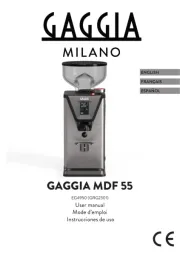
30 Juli 2025
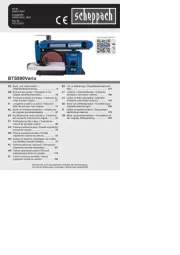
29 Juli 2025
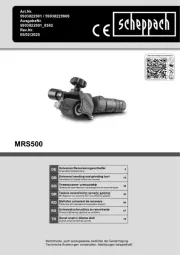
29 Juli 2025
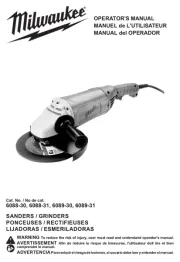
16 Juli 2025
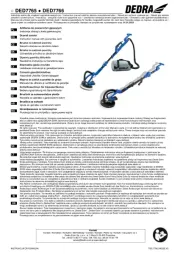
15 Juli 2025
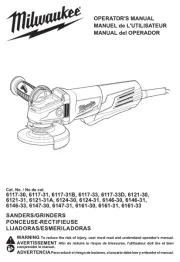
15 Juli 2025
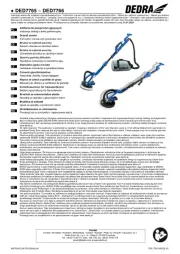
15 Juli 2025
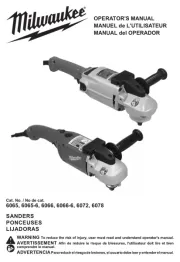
15 Juli 2025
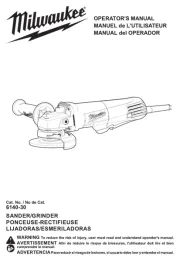
15 Juli 2025
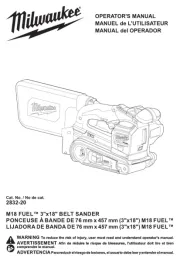
15 Juli 2025